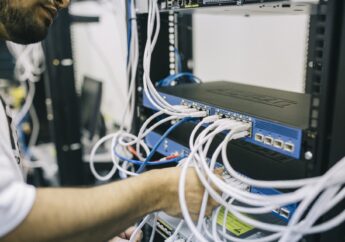Last-Mile Delivery: Boost Your Supply Chain Efficiency
by Barsha Bhattacharya Customer Service Published on: 28 November 2023 Last Updated on: 05 May 2025

Last-mile delivery is the final stage of the supply chain. There, the products are transported from distribution centers to customers. It is crucial for maintaining customer satisfaction and efficient operations.
This process can encounter numerous challenges, like traffic congestion and unpredictable customer demands. By adopting the right strategies and technologies, businesses can optimize last-mile delivery and boost their supply chain performance.
Inventory Optimization
Managing inventory balances customer demands with storage capacity and transportation costs. It is crucial for a streamlined supply chain. Companies can achieve more accurate inventory projections by using advanced analytics and demand forecasting. It can prevent out-of-stock scenarios or overstocking that results in wasted resources.
Use Appropriate Packaging Materials
Choosing the right packaging materials is also an essential aspect of efficient last-mile delivery. Utilizing appropriate shipping boxes can protect products during transportation, reduce shipping costs, and minimize environmental impact.
Consider factors like size, weight, and durability when selecting the most suitable packaging materials for your products.
Implement Green Initiatives
Opting for eco-friendly delivery options benefits the environment. It also improves a company’s reputation and reduces its environmental impact.
Some options to consider here include using electric or hybrid delivery vehicles. It also includes planning dense delivery routes to minimize carbon emissions and collaborating with other businesses for consolidated deliveries.
Adopt Digital Routing Solutions
Finding the quickest and most efficient routes is essential for optimizing last-mile delivery. Digital routing solutions can analyze real-time traffic conditions. It helps estimate delivery windows. It also assists drivers in optimizing their routes – ensuring timely and cost-efficient deliveries.
Leverage Iot And Mobile Technologies
Internet of Things (IoT) devices and mobile technology can be used to monitor delivery vehicle performance. They help remotely diagnose issues and track packages to prevent theft or loss.
For example, GPS tracking devices can be installed in fleet vehicles. It helps to gain real-time location data and monitor driver behavior. The barcode scanners connected to mobile devices can track parcels from warehouse to customer.
Offer Flexible Delivery Options
Flexibility in delivery options can significantly boost customer satisfaction. Businesses can achieve this by offering same-day delivery services for time-sensitive items, and flexible time slots for customers with specific scheduling needs. and smart lockers in heavily populated areas for secure package pickup.
Integrate AI And Robotics
Artificial intelligence (AI) and robotics are revolutionizing last-mile delivery operations. Robots and AI-driven systems can enhance efficiency by automating repetitive tasks, labor-intensive processes, and decision-making. They also improve accuracy and reduce delivery times. These technologies can be used for:
- Autonomous delivery vehicles and drones for swift transportation.
- Intelligent warehouse management systems for improved inventory control.
- AI-driven algorithms for demand forecasting and optimizing routes.
Measure And Continuously Improve
Constantly monitoring performance and evaluating the effectiveness of last-mile delivery strategies is crucial. By using Key Performance Indicators (KPIs), such as delivery time, success rate, and drivers’ efficiency, businesses can identify areas for improvement and adjust their operations accordingly.
Embrace Crowd-Shipping Platforms
Another way to optimize last-mile delivery is by utilizing the concept of crowd-shipping. This involves leveraging a shared economy model where independent drivers or local couriers help complete deliveries.
By tapping into this existing workforce, businesses can reduce shipping costs, increase delivery speeds, and provide better coverage in certain geographical areas.
Maintain Strong Customer Communication
Keeping customers in the loop about their delivery status is key to maintaining customer satisfaction. By sending real-time notifications, tracking updates, and offering support through multiple channels, businesses can provide a positive delivery experience that keeps customers coming back for more.
Invest In Employee Training And Incentives
To further improve the efficiency of last-mile deliveries, it is important to invest in training and incentives for delivery drivers. By offering ongoing training to improve driver skills, as well as incentives for meeting performance targets, businesses can boost motivation and overall productivity, leading to more efficient and timely deliveries.
Conclusion
Mastering last-mile delivery is critical for boosting supply chain efficiency and enhancing the overall customer experience.
By implementing strategic approaches that combine flexibility, technology, sustainability, and customer-focused communication, businesses can create a smoother, more cost-effective, and efficient last-mile delivery process, leading to numerous long-term benefits and improved market competitiveness.
Read Also:



































































































